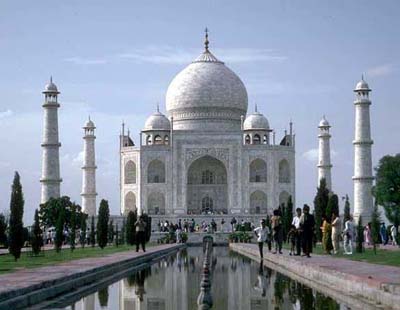 |
 |
The Religions of Indiaby Sri Kalyan Kr. Gogoi, Assam, IndiaFrom SIF SATELLITE, issue 45, Fall 1996
India, being a secular country, does not have any chief religion. The people of India are allowed for freedom of faith, worship and religion. In India, people can accept any religion. There are not any obstructions in this process. It shows that there are many diversities in the religion process of India. But it is not so. This process in fact, contributes to the national similarities. Among the major religions in India, Hinduism is the largest, followed by Islam, Christianity, Sikhism, Buddhism, Jainism, and Zoroastrianism. Hinduism is among the most ancient religions of India. The Hindus (people who follow the Hinduism) account for over 80% of India's total population. Hinduism teaches the existance of one "Supreme Universal Spirit", but allows its adherents to worship Him. This makes Hinduism a henotheistic religion. Hinduism has a rich and varied philosophy. The main scripture of the Hindus are Vedas, the Upanishads, the Gita, the Ramayana and the Mahabharata. The Muslims, as the followers of Islam religion, are known to form the second largest religious community of India. About 11% of the toal population of India, are known as Muslims. Though spread over all parts of India, the ration of Muslim population exceeds the national average in Laxadip Island, Jammu & Kashmir, Assam, and West Bengal. The Sikhs are a sturdy martial race known for their valour and broadmindedness. They constitute a little less than 2% of India's population. Though they live in all parts of India, their largest concentration is in Punjab, where they form the majority of the state's population. Gunru Nanak Dev, the founder of this religion, preached against humbug and hypocrisy in religion. However, it was Guru Govinda Singh who forged the Sikhs into a martial community. The Jains form about one half of one percent of India's total population and are largely spread in the states of Rajasthan, Maharashtra and Gujrat. Though Buddhism originated in India, the followers of this religion, i.e. the Buddhists, form less than three quarters of one percent of India's total population. Majarashtra has the largest concentration of the Buddhism as 85% of all the Buddhists in India live there. In addition to this, Arunachal Pradesh and the higher Himalayan Habitats of northwestern India too have some Buddhist population. Christians form about two and a half percent of India's population. They are largely concentrated in Goa, Maharashtra, Andhra Pradesh, Tamil Nadu and Kerela. The Parsees, as the followers of Zoroastrianism are known, fled their native Persia in the face of Muslim religious persecution and arrived in India in the 7th century. Since then most of them have remained in the region of Bombay (now Mumbai). |
Copyright 2003
 This page last updated
November 4, 2002
. E-mail Tim
This page last updated
November 4, 2002
. E-mail Tim
